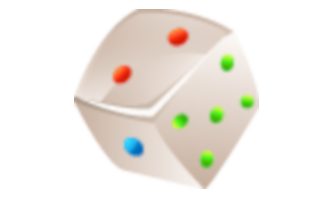Matter and its properties
Science, Grade 3
Matter and its properties
Study Guide

Matter and its properties
Flash Cards

Matter and its properties
Quiz

Matter and its properties
Worksheets

Matter and its properties
Games

Study Guide Matter and its properties Science, Grade 3
❮
1
/
3
❯
MATTER AND ITS PROPERTIES Everything around us is made out matter. Matter is anything that takes up space and has mass. All matter is made up of many different kinds of particles that are combined together in different ways. Lesson Checkpoint: What is matter? An atom is the basic building block of matter that make up all objects. It is the tiniest particle of any element. An element is matter that is made up of one type of particle. Scientists have identified over 100 elements in nature, which are labeled on the Periodic Table of Elements. Some elements are copper, calcium, and uranium. States of Matter There are three states of matter: solid, liquid, and gas. Solid matter always has and keeps the same shape. An example of a solid is a rock. A solid is matter in which its particles are fit together tightly. A second state of matter is liquid. A liquid is matter in which the particles are close together, but not as close as in a solid. © Copyright NewPath Learning. All Rights Reserved. Permission is granted for the purchaser to print copies for non-commercial educational purposes only. Visit us at www.NewPathLearning.com.
Liquids do NOT keep the same shape. Liquids take the shape of whatever container holds it. An example of a liquid is water. A third state of matter is gas. A gas is matter in which its particles are very far apart. Gas, like the air around us, has no shape and most gases are invisible. Gas is all around us. There is a layer of gas that surrounds Earth, which is called the atmosphere. An example of a gas is oxygen, which we need to breathe in order to survive. Lesson Checkpoint: What are the three states of matter? Properties of Matter A property of matter is a feature, trait, or characteristic. Matter can have many different properties. Properties are used to describe an object. Some properties of matter can be measured using tools such as a balance to measure an object’s mass and a graduated cylinder to measure the volume of liquids. Scientists most often use metric measurements when measuring matter. © Copyright NewPath Learning. All Rights Reserved. Permission is granted for the purchaser to print copies for non-commercial educational purposes only. Visit us at www.NewPathLearning.com.
Density is a property of matter that tells how much matter fits into a certain space. Buoyancy is also a property of matter. Buoyancy is whether an object sinks or floats in water. A property of an item may also be its hardness, like a brick. Size is also a property of matter. The size of something has to do with how big, small, wide, or thin something is. The size of an object can be measured using the metric units millimeters (mm), centimeters (cm), and meters (m). For long distances the metric unit of kilometers (km) can be used. Lesson Checkpoint: What is one property of matter? Volume is the amount of space matter takes up. Solids, liquids, and gases all have volume. Mass is how much there is of something. An object’s mass is not to be confused with how much it weighs. For example: An object’s mass is the same no matter if it is on Earth or on the moon. An object’s weight is different on the moon than it is on Earth because of gravity. Lesson Checkpoint: What is mass? © Copyright NewPath Learning. All Rights Reserved. Permission is granted for the purchaser to print copies for non-commercial educational purposes only. Visit us at www.NewPathLearning.com.
